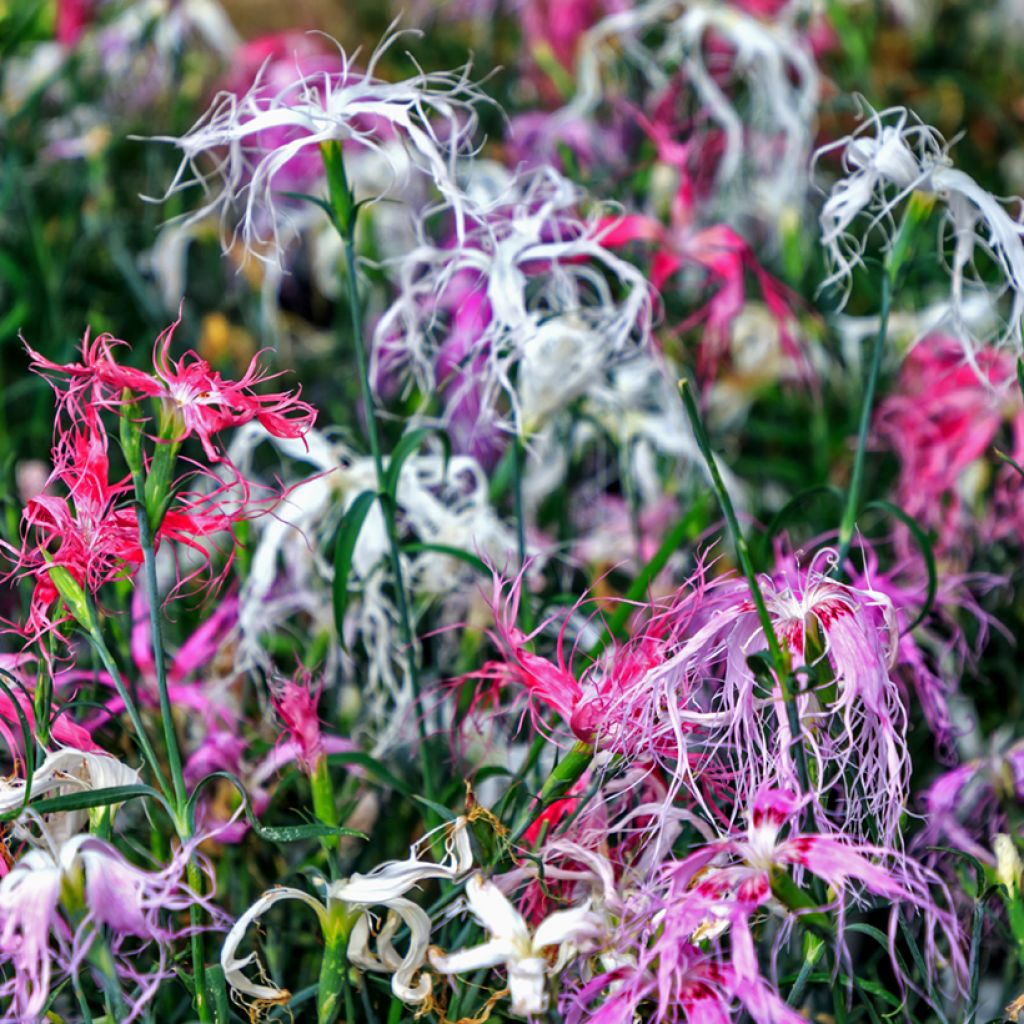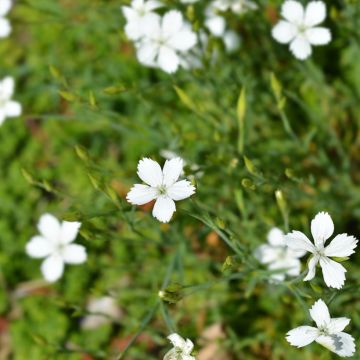

Dianthus superbus Spooky mix seeds - Fringed Pink


Dianthus superbus Spooky mix seeds - Fringed Pink
Dianthus superbus Spooky mix seeds - Fringed Pink
Dianthus superbus Spooky mix
Fringed Pink, Large Pink, Superb Pink
Special offer!
Receive a €20 voucher for any order over €90 (excluding delivery costs, credit notes, and plastic-free options)!
1- Add your favorite plants to your cart.
2- Once you have reached €90, confirm your order (you can even choose the delivery date!).
3- As soon as your order is shipped, you will receive an email containing your voucher code, valid for 3 months (90 days).
Your voucher is unique and can only be used once, for any order with a minimum value of €20, excluding delivery costs.
Can be combined with other current offers, non-divisible and non-refundable.
Home or relay delivery (depending on size and destination)
Schedule delivery date,
and select date in basket
This plant carries a 6 months recovery warranty
More information
We guarantee the quality of our plants for a full growing cycle, and will replace at our expense any plant that fails to recover under normal climatic and planting conditions.
Would this plant suit my garden?
Set up your Plantfit profile →
Description
Dianthus superbus 'Spooky mix' is a relatively hardy perennial plant with long spring and summer flowering. It offers funny spider-like flowers with very fringed delicate petals in a mix of pinks, reds, and whites. These attractive flowers also have an intoxicating fruity candy fragrance. This variety is floriferous from the year of sowing and is suitable for borders, planters, and cut flowers. Easy sowing in light, well-drained soil, in full sun.
Dianthus superbus belongs to the Caryophyllaceae family, native to the mountains of Europe and temperate Asia, where it grows in woods and damp meadows. The 'Spooky mix' assortment forms compact, bushy herbaceous clumps, reaching about 40 cm in height when in flower. Its rapid growth allows it to bloom from the year of sowing. Its branched stems are covered with persistent, linear, soft leaves of a pretty light bluish-green. From May to August, highly fragrant flowers appear at the end of strong stems, solitary or in pairs, measuring 4 cm in diameter. They display 5 deeply cut petals, looking like fine fringes arranged in a fan shape. Their colour varies in a range of pinks, reds, and whites, mostly in bicolour mixes. The plant is hardy up to USDA zone 8, around -10 to -12°C, in well-drained soil.
The 'Spooky mix' carnation is easy to grow and requires minimal maintenance once established. Its delicate flowers bring a touch of nostalgic charm to gardens and enrich every space. To enjoy its fragrance, consider planting it along pathways or near entrances where traffic is frequent. The 'Spooky mix' carnation is ideal for creating colourful carpets in front of flowerbeds. This plant also thrives in pots, whether on a balcony or terrace, provided good drainage is ensured and fertiliser is provided to support its growth. Consider pairing it with lavenders, Erigeron karvinskianus, hardy geraniums, or small ornamental grasses for a border full of movement.
Dianthus superbus Spooky mix seeds - Fringed Pink in pictures


Flowering
Foliage
Plant habit
Botanical data
Dianthus
superbus
Spooky mix
Caryophyllaceae
Fringed Pink, Large Pink, Superb Pink
Cultivar or hybrid
Other Dianthus seeds
View all →Planting and care
Sow the seeds of the superb Spooky mix carnation from February to April.
Sow in a seed tray, trays, or pots filled with special seed compost, well-drained. The seeds should be barely covered with compost. Place the young plants in a propagator, a mini-greenhouse, or a warm room to maintain an optimal temperature of 18 to 20°C. Germination usually takes 14 days. Keep in the light as this promotes germination. Keep the surface of the compost moist but not waterlogged.
Transplant the young plants when they are large enough to handle into individual pots with a diameter of 8 cm. Gradually acclimatise the young plants to outdoor conditions. Plant with a spacing of 23 cm between each plant once the frosts have passed.
Culture:
Plant the young carnations in ordinary, permeable, humus-bearing soil, rather light, moist to dry, but above all well-drained. Gravel-rich soil yields good results. In open ground, this plant is quite hardy, resistant down to -15 °C. It prefers a very sunny exposure. Lightly prune the clump after summer flowering to encourage a new bloom in September. In rich soil, trim back some of the foliage with shears after flowering to maintain a dense habit. In poor soil, it will be useful to apply a balanced fertiliser in March. It is advisable to divide the clumps every 3 years to rejuvenate those with bare bases or by easily propagating through layering or cuttings.
Sowing period
Intended location
Planting & care advice
This item has not been reviewed yet - be the first to leave a review about it.
Similar products
Haven't found what you were looking for?
Hardiness is the lowest winter temperature a plant can endure without suffering serious damage or even dying. However, hardiness is affected by location (a sheltered area, such as a patio), protection (winter cover) and soil type (hardiness is improved by well-drained soil).

Photo Sharing Terms & Conditions
In order to encourage gardeners to interact and share their experiences, Promesse de fleurs offers various media enabling content to be uploaded onto its Site - in particular via the ‘Photo sharing’ module.
The User agrees to refrain from:
- Posting any content that is illegal, prejudicial, insulting, racist, inciteful to hatred, revisionist, contrary to public decency, that infringes on privacy or on the privacy rights of third parties, in particular the publicity rights of persons and goods, intellectual property rights, or the right to privacy.
- Submitting content on behalf of a third party;
- Impersonate the identity of a third party and/or publish any personal information about a third party;
In general, the User undertakes to refrain from any unethical behaviour.
All Content (in particular text, comments, files, images, photos, videos, creative works, etc.), which may be subject to property or intellectual property rights, image or other private rights, shall remain the property of the User, subject to the limited rights granted by the terms of the licence granted by Promesse de fleurs as stated below. Users are at liberty to publish or not to publish such Content on the Site, notably via the ‘Photo Sharing’ facility, and accept that this Content shall be made public and freely accessible, notably on the Internet.
Users further acknowledge, undertake to have ,and guarantee that they hold all necessary rights and permissions to publish such material on the Site, in particular with regard to the legislation in force pertaining to any privacy, property, intellectual property, image, or contractual rights, or rights of any other nature. By publishing such Content on the Site, Users acknowledge accepting full liability as publishers of the Content within the meaning of the law, and grant Promesse de fleurs, free of charge, an inclusive, worldwide licence for the said Content for the entire duration of its publication, including all reproduction, representation, up/downloading, displaying, performing, transmission, and storage rights.
Users also grant permission for their name to be linked to the Content and accept that this link may not always be made available.
By engaging in posting material, Users consent to their Content becoming automatically accessible on the Internet, in particular on other sites and/or blogs and/or web pages of the Promesse de fleurs site, including in particular social pages and the Promesse de fleurs catalogue.
Users may secure the removal of entrusted content free of charge by issuing a simple request via our contact form.
The flowering period indicated on our website applies to countries and regions located in USDA zone 8 (France, the United Kingdom, Ireland, the Netherlands, etc.)
It will vary according to where you live:
- In zones 9 to 10 (Italy, Spain, Greece, etc.), flowering will occur about 2 to 4 weeks earlier.
- In zones 6 to 7 (Germany, Poland, Slovenia, and lower mountainous regions), flowering will be delayed by 2 to 3 weeks.
- In zone 5 (Central Europe, Scandinavia), blooming will be delayed by 3 to 5 weeks.
In temperate climates, pruning of spring-flowering shrubs (forsythia, spireas, etc.) should be done just after flowering.
Pruning of summer-flowering shrubs (Indian Lilac, Perovskia, etc.) can be done in winter or spring.
In cold regions as well as with frost-sensitive plants, avoid pruning too early when severe frosts may still occur.
The planting period indicated on our website applies to countries and regions located in USDA zone 8 (France, United Kingdom, Ireland, Netherlands).
It will vary according to where you live:
- In Mediterranean zones (Marseille, Madrid, Milan, etc.), autumn and winter are the best planting periods.
- In continental zones (Strasbourg, Munich, Vienna, etc.), delay planting by 2 to 3 weeks in spring and bring it forward by 2 to 4 weeks in autumn.
- In mountainous regions (the Alps, Pyrenees, Carpathians, etc.), it is best to plant in late spring (May-June) or late summer (August-September).
The harvesting period indicated on our website applies to countries and regions in USDA zone 8 (France, England, Ireland, the Netherlands).
In colder areas (Scandinavia, Poland, Austria...) fruit and vegetable harvests are likely to be delayed by 3-4 weeks.
In warmer areas (Italy, Spain, Greece, etc.), harvesting will probably take place earlier, depending on weather conditions.
The sowing periods indicated on our website apply to countries and regions within USDA Zone 8 (France, UK, Ireland, Netherlands).
In colder areas (Scandinavia, Poland, Austria...), delay any outdoor sowing by 3-4 weeks, or sow under glass.
In warmer climes (Italy, Spain, Greece, etc.), bring outdoor sowing forward by a few weeks.


























































